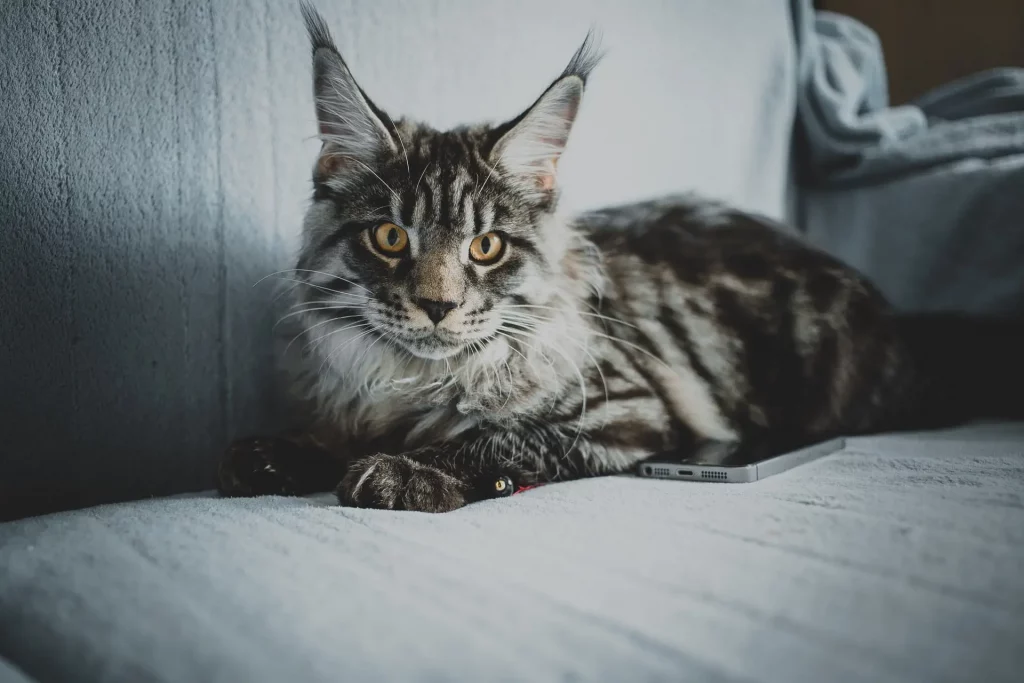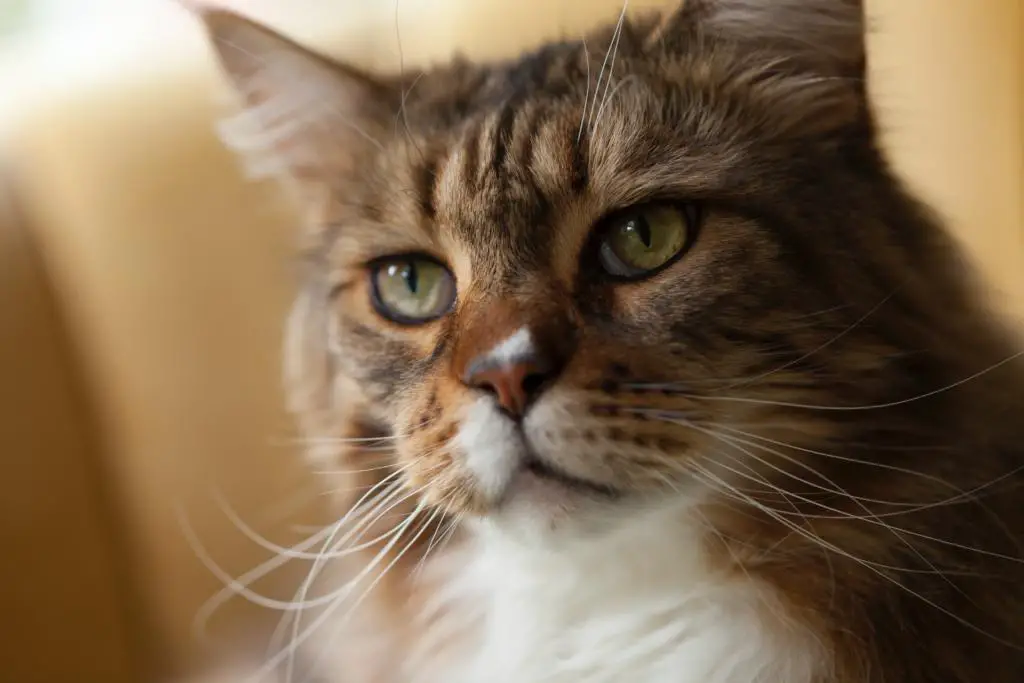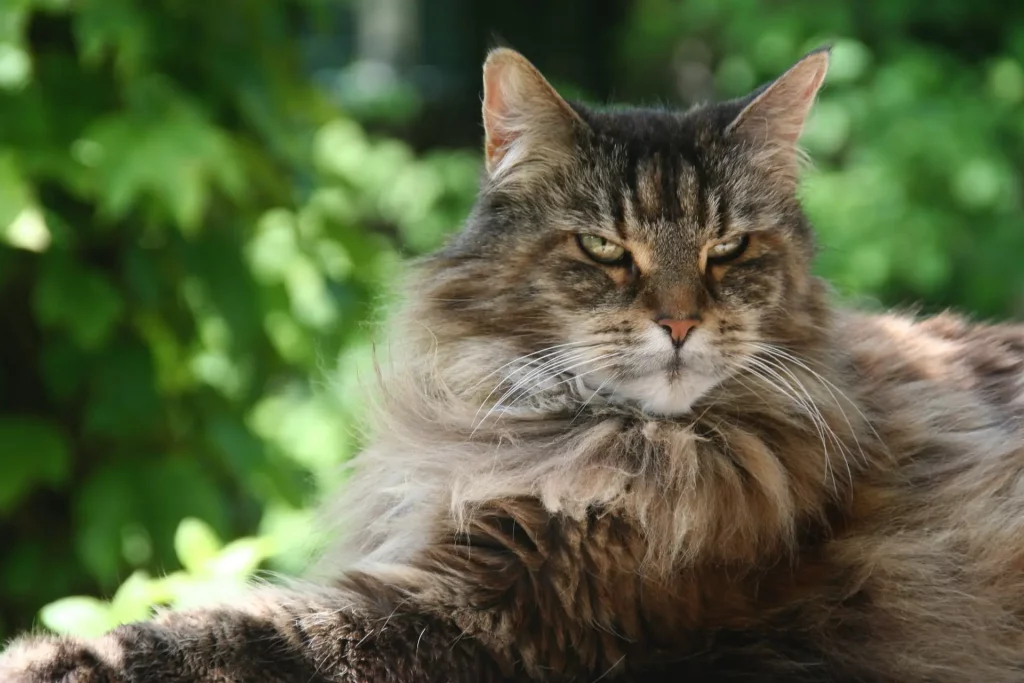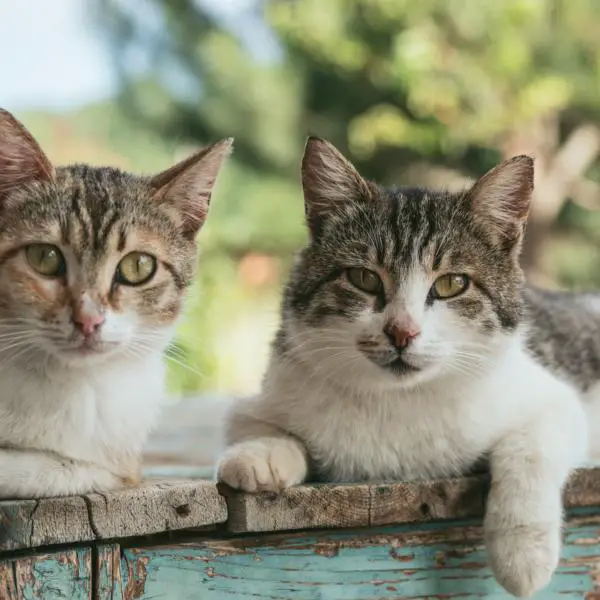Whether you’re looking into the Maine Coon as your potential next cat breed or you’ve just heard about the different types, the labeling can surely be confusing.
European Maine Coon, American Maine Coon, you’ll probably also hear about the Russian or even Asian Maine Coon.
Let’s stick to the two main types and see how it influences breeding across Europe and the US.
I own a Maine Coon myself and might have found an interesting thing or two in regards to her bloodline, I’ll get back to that below.
What exactly is the difference between the European Maine Coon and the American Maine Coon – this is the question your research will ultimately arrive at.
Truthfully, most articles will simply state that the European Maine Coon was born in Europe while the American one was born in America.
Well, technically this isn’t even the truth.
Bringing two European Maine Coons to the US and then breeding them doesn’t make the resulting kitty less of a European Maine Coon.
Similarly, the European Maine Coon is very desired among American breeders and there had to be a time (and it still happens) when real European bloodlines were transported to the US.

But let’s take a step back and check why cats look different in different locations at all.
Most of the time, it has nothing to do with the environment or location in and of itself but rather what appearance people desire.
If a certain appearance dominates that location, they’ll keep breeding the cats who display that specific trait.
Over time, that type of cat type can make its way across continents.
Even if a certain Maine Coon type settles in a different location, it doesn’t necessarily mean that it’s desired by people interested in the cat.
Potential buyers might just think that is how the Maine Coon looks or if enough breeders decide to accept that new line, there just wouldn’t be any other option.
Also, distinguishing the exact Maine Coon type isn’t exactly a piece of cake either.
To supplement my personal experience, I’ve done some research and found an interesting controversy surrounding the European Maine Coon.
Let’s dive a bit deeper.
European Maine Coons – What’s Special About Them
The European Maine Coon features more of a blockhead with a shorter snout, more wrinkles, and deep-set eyes in contrast to the well-formed American Maine Coon’s head.
The European Maine Coon is often heavier with a body resembling a tube and can have a slightly sloping back.
Basically, this appearance is what some minor European countries established as their type to the liking of some and the absolute disgust of others.
According to the UMCCA (the United Maine Coon Cat club), this type of Maine Coon often constitutes a fault.

However, you’ll still find plenty of European Maine Coon lines in American competitions.
Not all European Maine Coons look like the stereotypical ones with extreme blockheads and small faces, there’s a spectrum.
But it’s not always entirely clear-cut what type of Coon you have.
European Maine Coon Breeders
Breeders of the European Maine Coon often mingle their cats’ bloodlines with American Maine Coon to achieve the desired look while other European Maine Coon breeders commit to breeding controversial cats.
As mentioned above, some European Maine Coons can still compete, even in the American show ring.
Why do European Maine Coons differ so wildly in appearance?
Since some breeders seem to generally like the American Maine Coon type but not exactly the idealized version of them, they just temper that down with a softer-looking line which can very well be a American Maine Coon.
The truth is, you’ll find many purebred Maine Coons on American marketplaces that are not at all advertised to be of foreign bloodlines but in fact, they quite often trace back to Eastern Europe.
You might buy a Maine Coon in their birthplace and it turns out that cat isn’t even a purebred European line.
In fact, it’s not always easy to tell the difference just because of the appearance.
That’s why pedigree is so important so you know what you’ll get (plus all the health testing which is essential).
What about the other end of the spectrum?
Breeders of extreme bloodlines featured on Social Media are exposed to a lot of criticism.
While this criticism isn’t always packaged in a constructive way, the reality is that many people are concerned about how these cats are bred.
Many of these breeds act like others are “jealous” of their cats and defend themselves, stating that they are “just trying to advance the breed as a whole”.
But is it really true? What about the European Maine Coon’s health?
European Maine Coon Health
The European Maine Coon is exposed to the same issues as the American Maine Coon such as HD, ED, JLPP, and heart issues but their appearance might introduce respiratory issues, faults in gait, or genetic issues due to inbreeding.
Despite the understandable criticism in regards to cats who seemingly have a malformed head, many European lines do have health testing.
But do they really?
For example, if you check out #EuropeanMaineCoon on Instagram, you’ll stumble over many potential breeders.
Researching them reveals that quite a lot of them do health testing.
Essential health testing includes hip and elbow x-rays, JLPP tests, heart and eye exams, and perhaps more to rule out hereditary conditions.
These European Maine Coon breeders seem to do these so far so good.
Even with the most controversial individuals, most of them are HD/ED-free.
But that leads us to the question of how trustworthy these tests really are.
Remember to always ask your European Maine Coon breeder (or any breeder) to see the actual x-rays and which vet it was taken at and if in doubt, consult an independent vet on the results!

It’s hard to imagine the most extreme Maine Coons don’t suffer from any issues such as respiratory issues due to their short muzzle alone.
However, so far I’ve couldn’t find any proof since documentation is sparse.
If you’re looking into buying a Maine Coon kitty, make sure to trace back their ancestry which also often reveals inbreeding or linebreeding.
Consult your breeder or perhaps even a knowledgeable vet if something seems unclear to you.
In terms of temperament, many Coons are featured with children but that’s really just a tiny part of daily life and even then, it’s just a snippet.
Always ask to see the parents, interact with them, ask for certificates or videos.
European Maine Coon Size
European Maine Coons are generally on the large side of the breed standard and often heavier than their American counterparts with up to 8-14kg for males instead of 6-12kg.
Maine Coon kittens are growing pretty quickly and while large American males do exist, they’ll almost always have a different build.
Size shouldn’t matter so much and at some point, a Maine Coons will lose their athletic power that propels their muscular body.
A healthy weight is essential to avoid many obesity-related issues in felines.
Also, feeding your cat a healthy diet will decrease chances of issues such as hip or elbow dysplasia as well as heart-related issues or presumably loss of cognitive function.
European Maine Coon vs. American Maine Coon
European Maine Coons are bred to have short muzzles and blockheads as well as an overall stocky build in many cases while American Maine Coons are still bred somewhat true to their original type.
Whether the best type is the original or the European type or a mixture thereof is left for each potential cat owner to decide.
Personally, I’m not a big fan of any breeding that introduces health issues as discussed above.
As long as there’s no definitive proof showing that a specific bloodline is 100% healthy, I’d err on the side of caution and go with a well-bred type instead.
According to the UMCC (United Maine Coon Cat club), many American Maine Coons would be disqualified, or at the very least score many faults.
Here’s a little except on traits the UMCC club considers “faults”:
- Head: (…) Narrow, light, too short, long, coarse or excessively molossoid head; excessively broad skull, (lack of stop, too little stop or too strong stop). Very deep frontal groove.
- Foreface: Long, pointed or too short muzzle (any muzzle shorter than 40 percent of the length of the head is too short); split nose; Roman nose (convex nasal bridge) or dish-faced (concave nasal bridge); acquiline nose (…)
- Skin: Wrinkles on head.
Many of the “severe faults” could’ve been aimed just as well at some of the extreme European Maine Coons out there:
- General appearance: Too molossoid type and heavy general appearance.
- Skin: Skin at the head strongly wrinkled, strong wrinkles in the area of the forehead, the muzzle and the cheeks, strong dewlap.
- Gait: Sluggish action while trotting.
At the end of the day, it’s important to do your research.
When buying a kitten, ask for health testing, interacting with the parents, and spend time with each kitten.
Checking out their bloodlines takes a couple of minutes nowadays and can save you a lot of headaches, especially if inbreeding is involved (as can be the case with any cat breed and breeder).



Leave a Comment